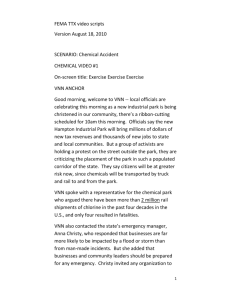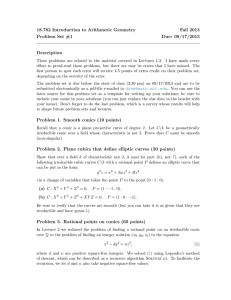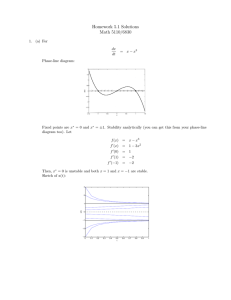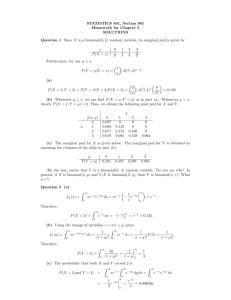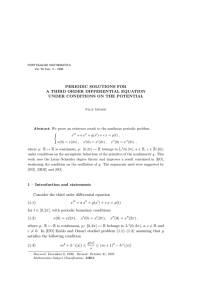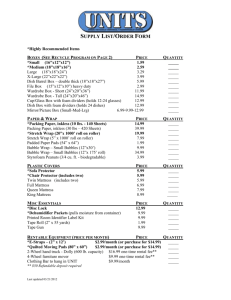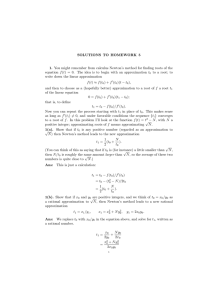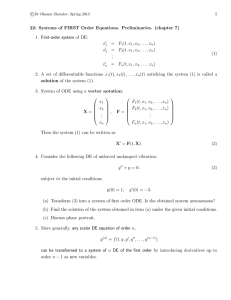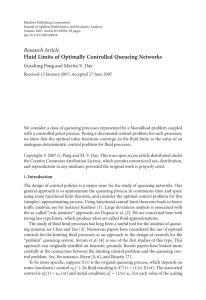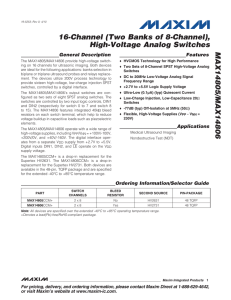Math 515 Professor Lieberman November 15, 2004 HOMEWORK #12 SOLUTIONS
advertisement
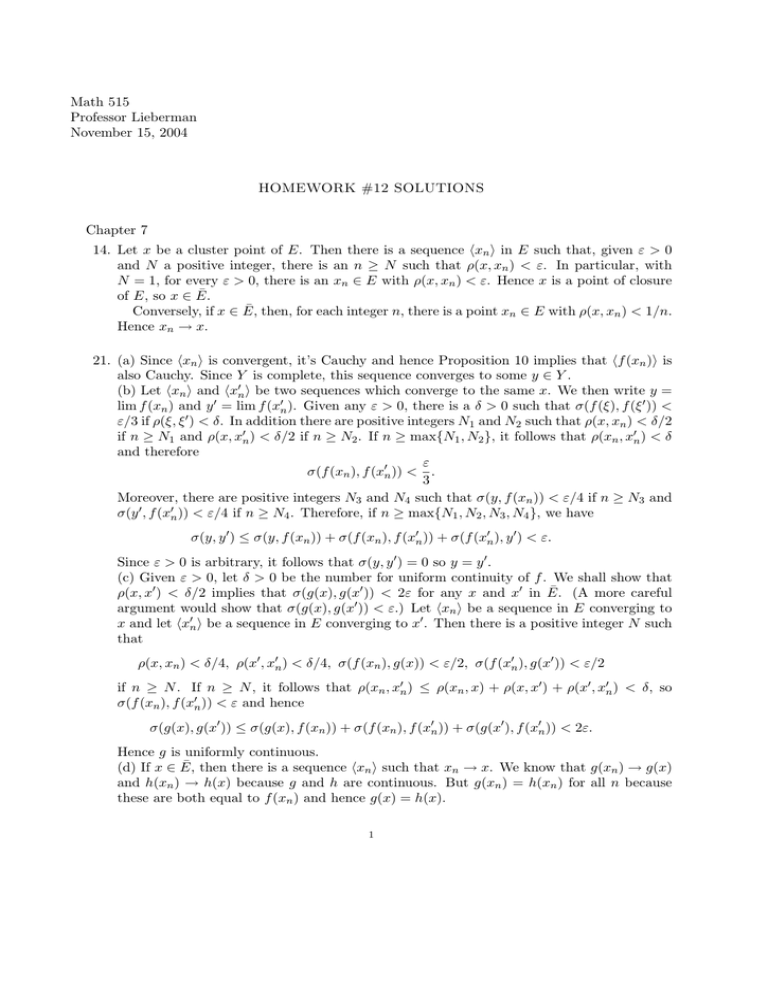
Math 515
Professor Lieberman
November 15, 2004
HOMEWORK #12 SOLUTIONS
Chapter 7
14. Let x be a cluster point of E. Then there is a sequence hxn i in E such that, given ε > 0
and N a positive integer, there is an n ≥ N such that ρ(x, xn ) < ε. In particular, with
N = 1, for every ε > 0, there is an xn ∈ E with ρ(x, xn ) < ε. Hence x is a point of closure
of E, so x ∈ Ē.
Conversely, if x ∈ Ē, then, for each integer n, there is a point xn ∈ E with ρ(x, xn ) < 1/n.
Hence xn → x.
21. (a) Since hxn i is convergent, it’s Cauchy and hence Proposition 10 implies that hf (xn )i is
also Cauchy. Since Y is complete, this sequence converges to some y ∈ Y .
(b) Let hxn i and hx0n i be two sequences which converge to the same x. We then write y =
lim f (xn ) and y 0 = lim f (x0n ). Given any ε > 0, there is a δ > 0 such that σ(f (ξ), f (ξ 0 )) <
ε/3 if ρ(ξ, ξ 0 ) < δ. In addition there are positive integers N1 and N2 such that ρ(x, xn ) < δ/2
if n ≥ N1 and ρ(x, x0n ) < δ/2 if n ≥ N2 . If n ≥ max{N1 , N2 }, it follows that ρ(xn , x0n ) < δ
and therefore
ε
σ(f (xn ), f (x0n )) < .
3
Moreover, there are positive integers N3 and N4 such that σ(y, f (xn )) < ε/4 if n ≥ N3 and
σ(y 0 , f (x0n )) < ε/4 if n ≥ N4 . Therefore, if n ≥ max{N1 , N2 , N3 , N4 }, we have
σ(y, y 0 ) ≤ σ(y, f (xn )) + σ(f (xn ), f (x0n )) + σ(f (x0n ), y 0 ) < ε.
Since ε > 0 is arbitrary, it follows that σ(y, y 0 ) = 0 so y = y 0 .
(c) Given ε > 0, let δ > 0 be the number for uniform continuity of f . We shall show that
ρ(x, x0 ) < δ/2 implies that σ(g(x), g(x0 )) < 2ε for any x and x0 in Ē. (A more careful
argument would show that σ(g(x), g(x0 )) < ε.) Let hxn i be a sequence in E converging to
x and let hx0n i be a sequence in E converging to x0 . Then there is a positive integer N such
that
ρ(x, xn ) < δ/4, ρ(x0 , x0n ) < δ/4, σ(f (xn ), g(x)) < ε/2, σ(f (x0n ), g(x0 )) < ε/2
if n ≥ N . If n ≥ N , it follows that ρ(xn , x0n ) ≤ ρ(xn , x) + ρ(x, x0 ) + ρ(x0 , x0n ) < δ, so
σ(f (xn ), f (x0n )) < ε and hence
σ(g(x), g(x0 )) ≤ σ(g(x), f (xn )) + σ(f (xn ), f (x0n )) + σ(g(x0 ), f (x0n )) < 2ε.
Hence g is uniformly continuous.
(d) If x ∈ Ē, then there is a sequence hxn i such that xn → x. We know that g(xn ) → g(x)
and h(xn ) → h(x) because g and h are continuous. But g(xn ) = h(xn ) for all n because
these are both equal to f (xn ) and hence g(x) = h(x).
1
2
22. (a) In the proofs for Problem 10a, the δ’s were independent of x.
(b) Define f by f (x) = arctan x. Then f is a homeomorphism but not a uniform homeomorphism because f −1 is not uniformly continuous. (f −1 (x) = tan x which is not uniformly
continuous on (− π2 , π2 ).) Define
σ(x, y) = max{(|f (xi ) − f (yi )|}
for x = (x1 , . . . , xn ) and y = (y1 , . . . , yn ).
(c) The δ in Problem 11a was independent of x.
28. (a) Let ε > 0 be given and let δ be the number from the definition of uniform continuity.
Then there is a finite cover of X by balls of radius δ: {B(xi , δ)}. By uniform continuity,
f (B(xi , δ)) ⊂ B(f (xi ), ε), and if y ∈ Y , there is a point x ∈ X such that f (x) = y. But
x ∈ B(xi , δ) for some i and hence y ∈ B(f (xi ), ε). It follows that {B(f (xi ), ε} is a finite
cover of X by balls of radius ε.
(b) NO. Let X = (0, 1) and Y = (0, ∞) with f (x) = x/(1 − x).
